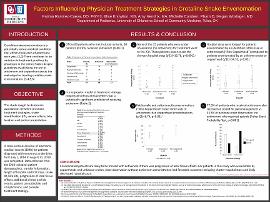| dc.description.abstract | BACKGROUND: Crotaline snake envenomation is a potentially serious medical condition that affects thousands of Americans each year. There continues to be variation in treatment practices by physicians in the United States despite guidelines establishing the use of antivenom and supportive care as the mainstays for treating crotaline snake envenomation.
METHODS: This study sought to determine associations between physician treatment strategies, snake identification (ID), venom effects, bite location and patient presentation. A cross-sectional review of electronic medical records (EMR) for patients diagnosed with venomous snake bites from July 1, 2014 to August 31, 2019 was completed. Data collected from the EMR included: patient demographics, transfer information, length of hospital and ICU stays, snake ID, bite site, progression of local tissue effects, additional clinical and lab results, patient comorbidities and complications, and provider treatment strategy.
RESULTS: Of the 83 patients who met inclusion criteria, 68 patients (81.9%) received antivenom. None of the 15 patients who were under observation (no antivenom) for treatment went to the ICU. These patients experienced the shortest hospital stays (H(2)=16.76, p<0.001). Hospital stays were longest for patients envenomated by an identified rattlesnake or cottonmouth compared to patients envenomated by an unknown snake or copperhead (H(2)=14.32, p<0.05). Rattlesnake envenomations used more vials of antivenom than copperhead envenomations (H(2)=8.76, p=0.01). In a regression model of treatment strategy, progression of local tissue effects was the only statistically significant predictor of receiving antivenom while other independent variables including snake ID, patient age, hemotoxicity, systemic symptoms, site of the snakebite, and patient comorbidities were not significant predictors. Lastly, there was a statistically significant association between treatment strategy and opioid prescription, with 77.9% of patients who received antivenom also receiving an opioid for pain management vs. 33.3% of patients under observation (no antivenom) who received opioids (Fisher Exact Probability Test, p=0.001).
CONCLUSION: Envenomated patients are likely to be treated with antivenom if there was progression of local tissue effects. For patients in this study who were bitten by copperheads and unknown snakes, close observation without antivenom administration had favorable outcomes including shorter hospital stays and likely decreased hospital costs. | en_US |
